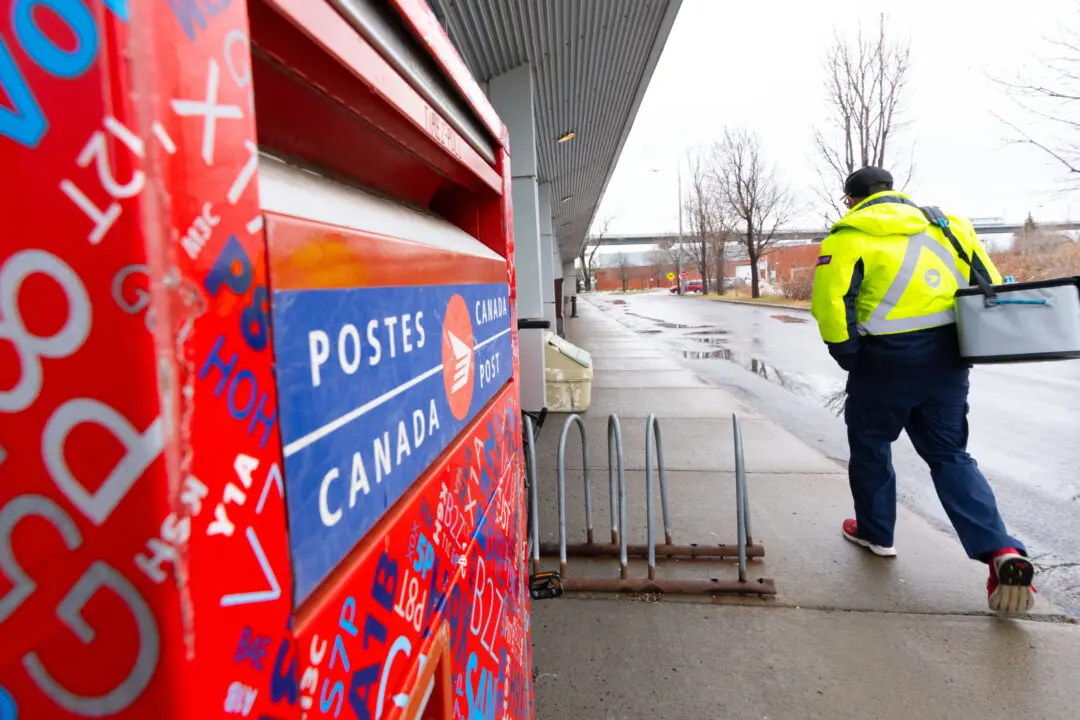Canada Post has received strike notices this week from the union representing more than 55,000 postal workers, with a shutdown of operations anticipated on May 23, marking the second strike in a six-month period.
Canada Post and the Canadian Union of Postal Workers (CUPW) have been at odds for more than a year as the two sides have attempted to hammer out a deal at the bargaining table.
Strike Notice
CUPW has informed management that employees plan to hit the picket line as of midnight on May 23, three days after the union issued strike notice to Canada Post, the Crown agency that employs its workers. The 72-hour strike notice applies to the bargaining units representing the union’s urban and rural workers, the union said.The walkout is poised to coincide with the expiration of a pair of collective agreements that had been extended until May 22.
Union Stance
The union told The Epoch Times in an email it had opted to deliver strike notice to Canada Post because of “the employer’s recent indication that it may unilaterally change working conditions and suspend employee benefits.”“Our goal continues to be negotiated collective agreements that support the well-being of workers, the communities we serve, and the sustainability of the public post,” the union said.
The 162-page paper by William Kaplan, who headed the commission, stated that moratoriums on rural post office closures and community mailbox conversions should be lifted as well.
The union largely rejected the report’s findings, saying the report “simply regurgitates Canada Post’s proposals and positions.”
“What we have seen so far has left us disappointed — but not surprised,” union spokeswoman Siân Griffiths said.
“The union, band councillors, municipalities, international organizations — and the public — took the time to research and send in thorough submissions in our support,” she said. “All were dismissed in the report.”
The union’s issuance of a strike notice was largely driven by the proposed alterations to employee working conditions, but it is also about continuing what it started when its members went on strike last November.
Financial Woes
Canada Post paused negotiations with the union last week, saying they were going nowhere. The postal service said the temporary halt would allow it to return with “comprehensive proposals” aimed at advancing the discussions.The union said it was disappointed by the move.
“There is still time to return to the bargaining table,” CUPW said in its email. “We remain committed to negotiating collective agreements and urge the employer to do the same.”
Canada Post said it is focused on reaching collective agreements that prioritize the protection and improvement of wages and benefits while also recognizing the current financial circumstances of the corporation. The Crown corporation has recorded losses of more than $3 billion before tax since 2018.
The Epoch Times contacted Canada Post for comment on the upcoming strike, but was referred back to its May 19 press release by spokesperson Lisa Liu.
Liu said in an emailed statement last fall that Canada Post was at a “critical juncture” financially and that threats of a strike at that time resulted in a 42 percent decline in parcel volumes compared to the same week the previous year.
The report from Commissioner William Kaplan said Canada Post is “facing an existential crisis.”
Report Recommendations
Aside from eliminating daily mail delivery for homes and lifting the moratoriums on rural post office closures, Kaplan recommended hiring part-time employees to deliver parcels on the weekend and to assist with high volume during the week.Canada Post must also be able to change routes daily to reflect mail volume, a practice that would help it avoid “trapped time and overtime,” he said.
Kaplan also suggested collective agreements include all language that was agreed to prior to the strike and what was agreed to in near-final tentative agreements. The parties should also work on narrowing the differences on issues where they are close, he said.
Impact of Strike
A work stoppage would have repercussions for millions of residents and businesses who typically receive more than two billion letters and approximately 300 million packages annually through the postal service, Canada Post said.The delivery of mail and parcels will be suspended if the strike moves ahead and no new items will be accepted until the national labour disruption has ended.
“All mail and parcels in our network will be secured and delivered as quickly as possible once operations resume,” the postal agency said. “Following either a rotating strike or a national labour disruption, processing and delivery may take some time to fully return to normal.”
A 32-day strike during the busy Christmas season last November and December left millions of letters and parcels in limbo and a massive backlog to sort through when the work stoppage ended.
Ottawa asked the federal labour board to send workers back to the job in December when talks were at an impasse and a strike was disrupting holiday mail deliveries.
The union rejected the proposal.
The two sides had been at the bargaining table for nearly a year before talks broke down.







